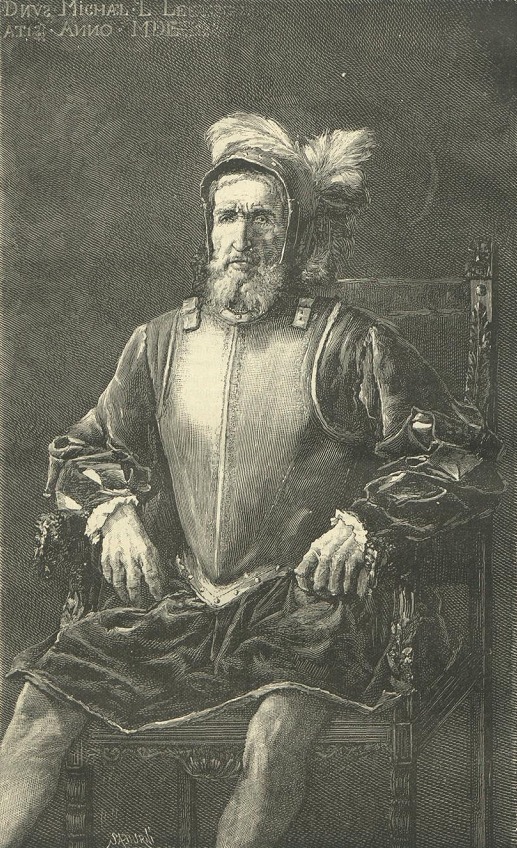The Philippines is a small country comprised of numerous islands located in Southeast Asia, but despite its size, the country possessed thousands of different spices and resources, which made them an attractive location for many spice traders and sailors to conquer or colonize. One of the countries that expressed interest in the country during the era of the “spice trade” was Spain, and it is through one exceptional expedition that they were able to colonize the Philippines and make it a part of their country. To know more about how Spain became the owner of the small country in Southeast Asia, here is a brief history of the Spanish colonization of the Philippines.
Lopez de Legazpi’s Expedition
Miguel Lopez de Legazpi, the civil governor of New Spain (now Mexico), was tasked in 1564 by the second viceroy of the country, Luis de Velasco, to become the leader of an expedition that aims to find the Spice Islands (Moluccas) around the Pacific Ocean. In November of the same year, Lopez de Legazpi set out with five ships and 500 soldiers and sailed towards the Philippines from the port of Barra de Navidad in New Spain. In addition to Lopez de Legazpi and 500 soldiers, the ships also included six Augustinian missionaries, who would eventually spread the Catholic religion in the Philippines. Lopez de Legazpi’s son Melchor, his grandson Felipe de Salcedo, and the survivor from Ferdinand Magellan’s expedition Guido de Lavezarez were also included as part of the crew members of the ships.
Lopez de Legazpi in the Philippines
Lopez de Legazpi first arrived in Bohol, an island located in the Visayan region of the Philippines. On that island, he was greeted by Catunao, the chief or “datu” of Bohol, and informed him about the island of Cebu, which was supposed to be home of the Indianized Rajahnate of the island. While there were able to go near Cebu on February 13, 1565, they weren’t able to put their ships ashore because of the hostility of the Cebu natives.
After not being able to go to Cebu, Lopez de Legazpi sailed to the nearby island of Samar on February 22, 1565, and made a blood pact with the island chief, Datu Urrao. The expedition team then sailed to Limasawa (Southern Leyte) and befriended Rajah Sigala. After gaining the trust of the islands near Cebu, Lopez de Legazpi returned to the said island to negotiate with the Rajahnate, but instead of a friendly welcome, the expedition leader was challenged to a battle. The Rajahnate lost, and Lopez de Legazpi was able to establish a colony named “Villa del Santisimo Nombre de Jesus” (Town of the Most Holy Name of Jesus) in Cebu.
Lopez de Legazpi then sailed to the island of Panay in 1569 and was welcomed by the natives. The expedition team was then able to create the second settlement that they called “Capiz,” which is now named the city of Roxas. After being informed that a group of Muslim Moro pirates in Mindoro are plundering Panay, Lopez de Legazpi sent his grandson Juan de Salcedo (who came from New Spain in 1657) to lead a group of soldiers to defeat the pirates. Salcedo was victorious in the battle, and the island of Mindoro eventually became another settlement for the Spaniards.
The Battle of Manila in 1570
After colonizing most of the islands in the Visayas region, Lopez de Legazpi then turned his attention to the north after finding out that the Luzon region has ample food supplies and resources. Before going to the said region, he first sent messages of friendship to the ruler of Luzon, Rajah Matanda. Then, after receiving welcoming messages, Lopez de Legazpi assigned a soldier named Martin de Goiti to lead an army of soldiers to the north and meet Rajah Matanda.
In May 1570, de Goiti arrived in Cavite and proceeded north to Manila, where the home of Rajah Matanda is located. Rajah Matanda greeted the Spaniards with a warm welcome, but after Rajah Sulayman joined the meeting and expressed his disagreement with Spain and Manila’s partnership, the friendship between the two parties soured. On May 24, several Spanish ships began firing cannons as a signal for them to return. However, the people of Manila interpreted the firing as a sign of battle, and as such, Rajah Sulayman ordered his forces to attack the ships and the Spanish forces that are still in the region. Unfortunately, Sulayman’s forces were defeated and de Goiti declared Manila and the known parts of Luzon to be a new settlement of Spain.
Lopez de Legazpi followed soon after, and his forces were able to crush the resistance that survived during Sulayman and de Goiti’s battle. The leader of the expedition officially named Manila as the “city” of the Spanish colony in the Philippines. On June 24, 1571, Lopez de Legazpi then declared Manila as the capital of the Spanish East Indies, which is comprised of the Philippines, Marianas Islands, Carolines Islands, Palaos (now Palau), a portion of Formosa (now Taiwan), a portion of Sulawesi (now Celebes), and a portion of the Moluccas (the Maluku Islands). After the Spanish colonization, Manila would eventually be known as the capital of the Philippines.


